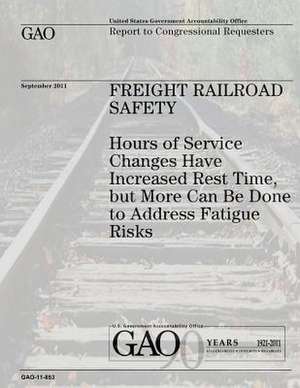Freight Railroad Safety
Autor U. S. Government Accountability Office, U. S. Governmenten Limba Engleză Paperback
Preț: 104.09 lei
Nou
Puncte Express: 156
Preț estimativ în valută:
19.92€ • 21.65$ • 16.75£
19.92€ • 21.65$ • 16.75£
Carte disponibilă
Livrare economică 31 martie-14 aprilie
Preluare comenzi: 021 569.72.76
Specificații
ISBN-13: 9781478124474
ISBN-10: 1478124474
Pagini: 78
Dimensiuni: 216 x 279 x 4 mm
Greutate: 0.2 kg
Editura: CREATESPACE
ISBN-10: 1478124474
Pagini: 78
Dimensiuni: 216 x 279 x 4 mm
Greutate: 0.2 kg
Editura: CREATESPACE
